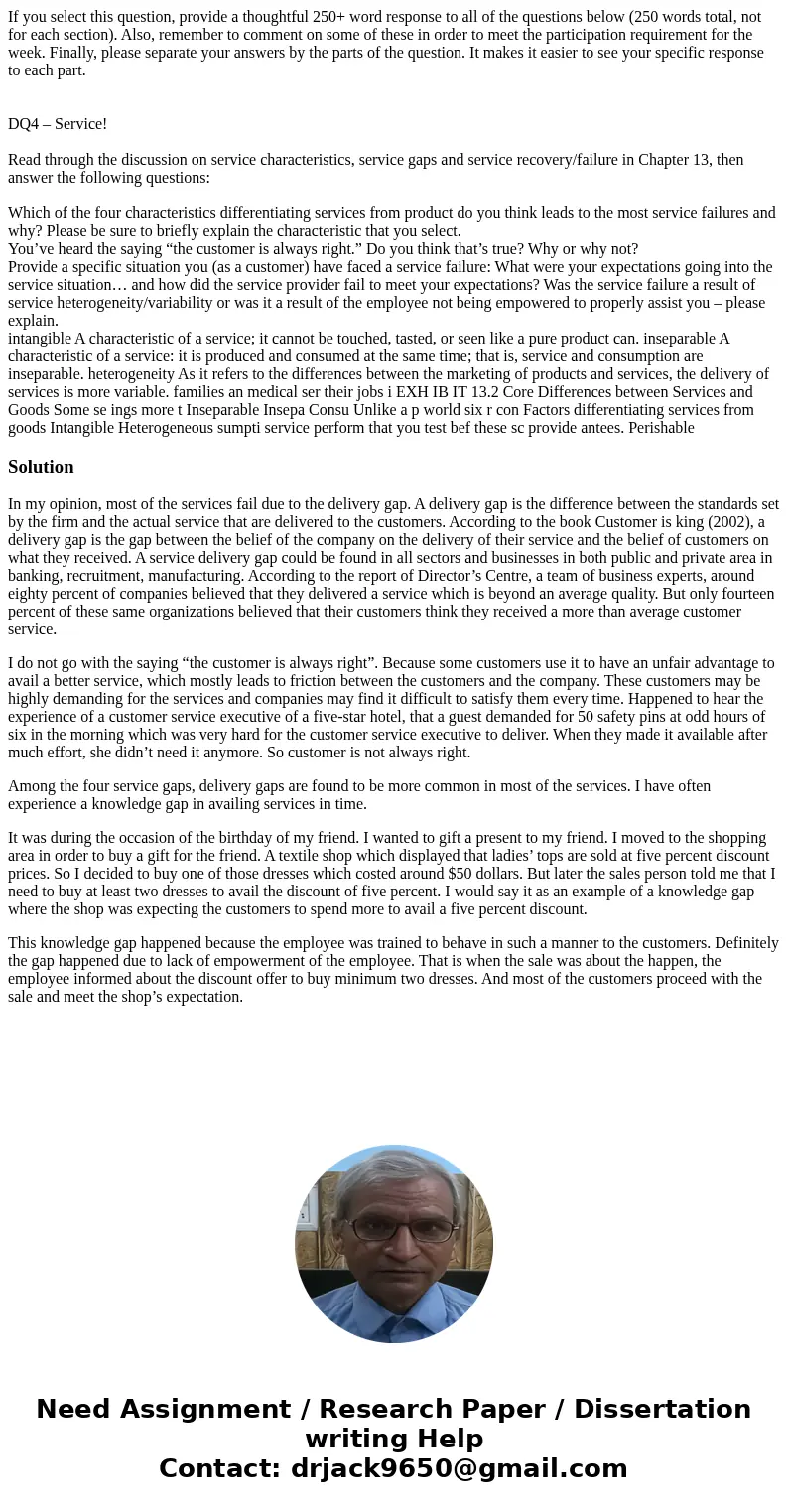If you select this question provide a thoughtful 250 word re
Solution
In my opinion, most of the services fail due to the delivery gap. A delivery gap is the difference between the standards set by the firm and the actual service that are delivered to the customers. According to the book Customer is king (2002), a delivery gap is the gap between the belief of the company on the delivery of their service and the belief of customers on what they received. A service delivery gap could be found in all sectors and businesses in both public and private area in banking, recruitment, manufacturing. According to the report of Director’s Centre, a team of business experts, around eighty percent of companies believed that they delivered a service which is beyond an average quality. But only fourteen percent of these same organizations believed that their customers think they received a more than average customer service.
I do not go with the saying “the customer is always right”. Because some customers use it to have an unfair advantage to avail a better service, which mostly leads to friction between the customers and the company. These customers may be highly demanding for the services and companies may find it difficult to satisfy them every time. Happened to hear the experience of a customer service executive of a five-star hotel, that a guest demanded for 50 safety pins at odd hours of six in the morning which was very hard for the customer service executive to deliver. When they made it available after much effort, she didn’t need it anymore. So customer is not always right.
Among the four service gaps, delivery gaps are found to be more common in most of the services. I have often experience a knowledge gap in availing services in time.
It was during the occasion of the birthday of my friend. I wanted to gift a present to my friend. I moved to the shopping area in order to buy a gift for the friend. A textile shop which displayed that ladies’ tops are sold at five percent discount prices. So I decided to buy one of those dresses which costed around $50 dollars. But later the sales person told me that I need to buy at least two dresses to avail the discount of five percent. I would say it as an example of a knowledge gap where the shop was expecting the customers to spend more to avail a five percent discount.
This knowledge gap happened because the employee was trained to behave in such a manner to the customers. Definitely the gap happened due to lack of empowerment of the employee. That is when the sale was about the happen, the employee informed about the discount offer to buy minimum two dresses. And most of the customers proceed with the sale and meet the shop’s expectation.

 Homework Sourse
Homework Sourse